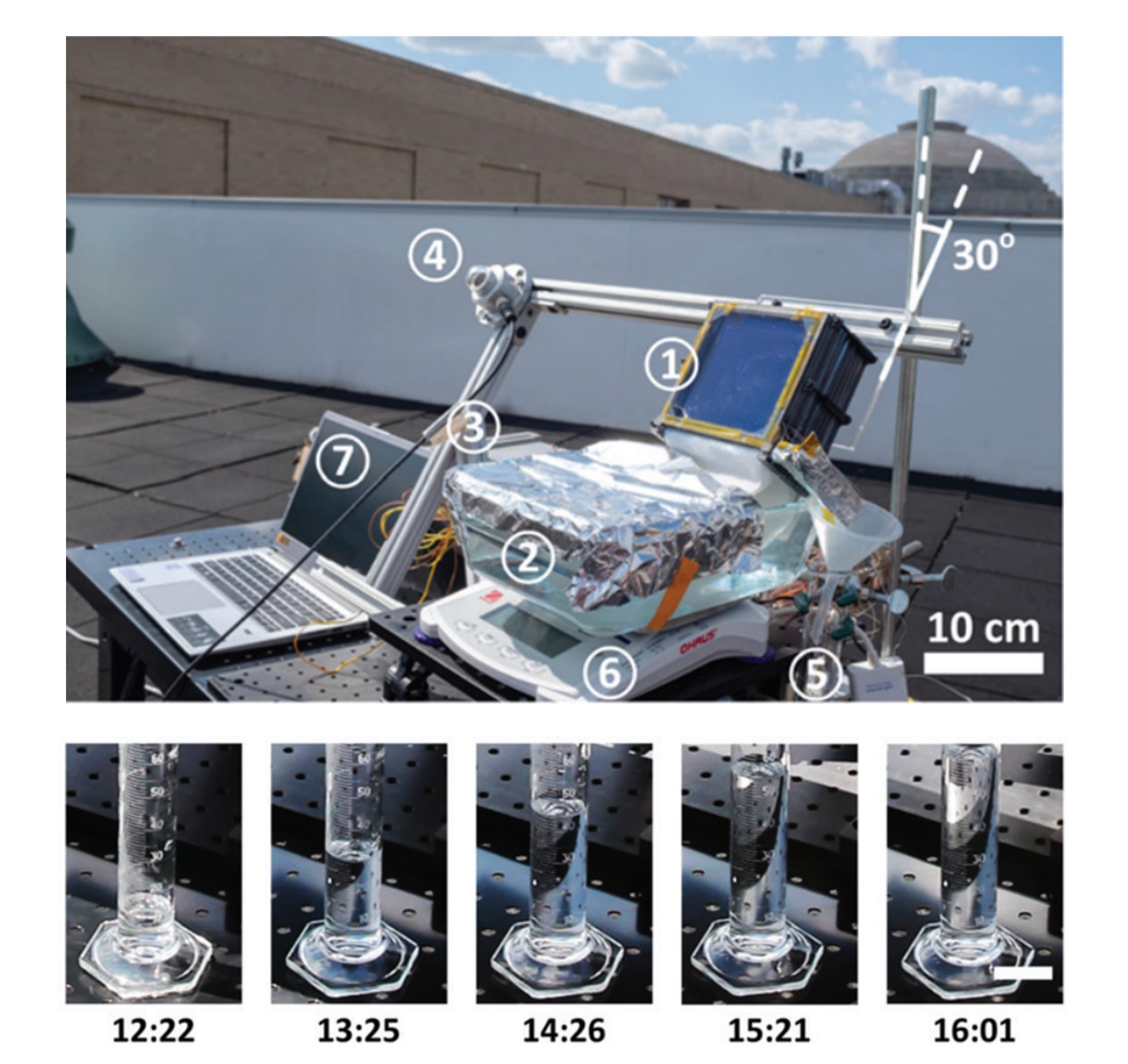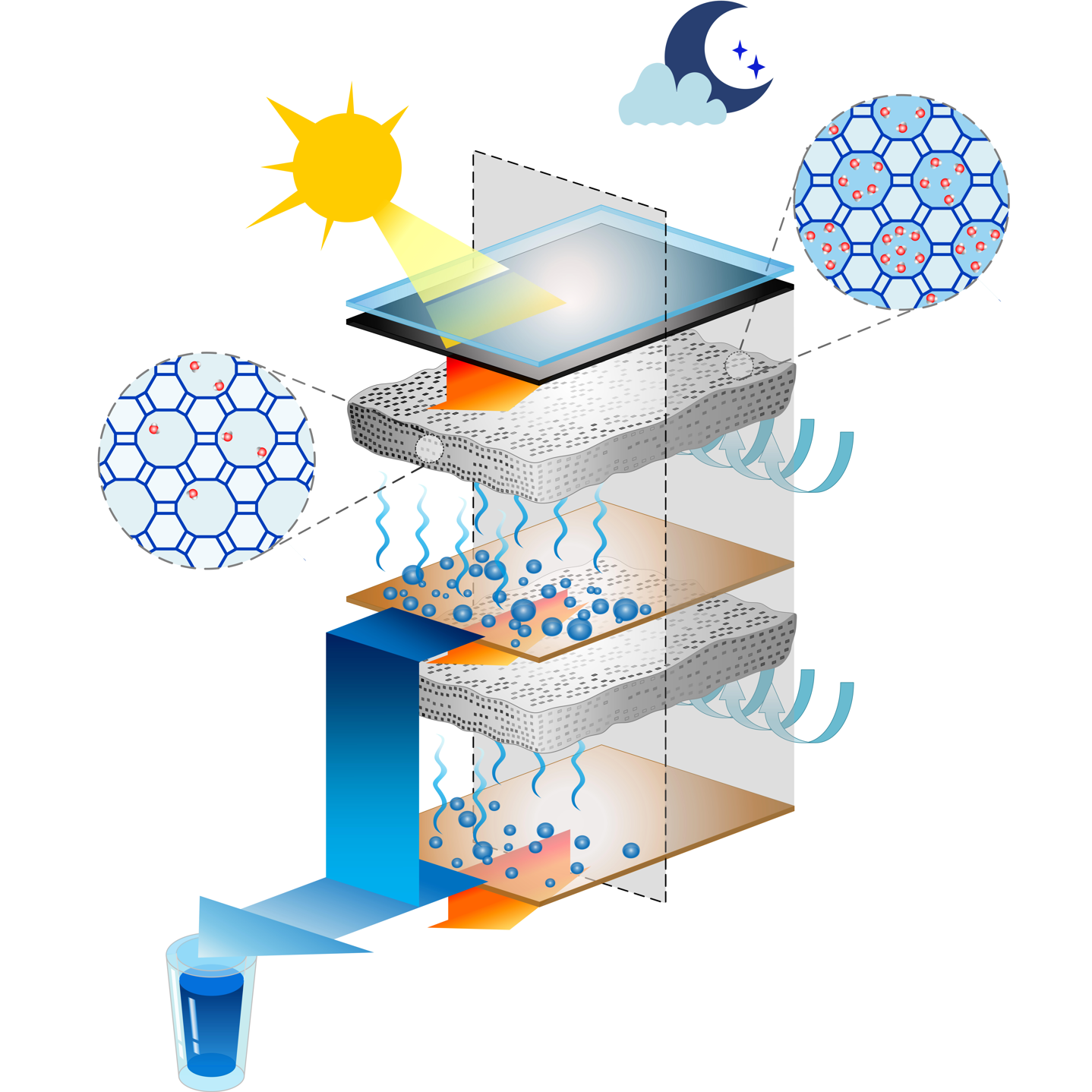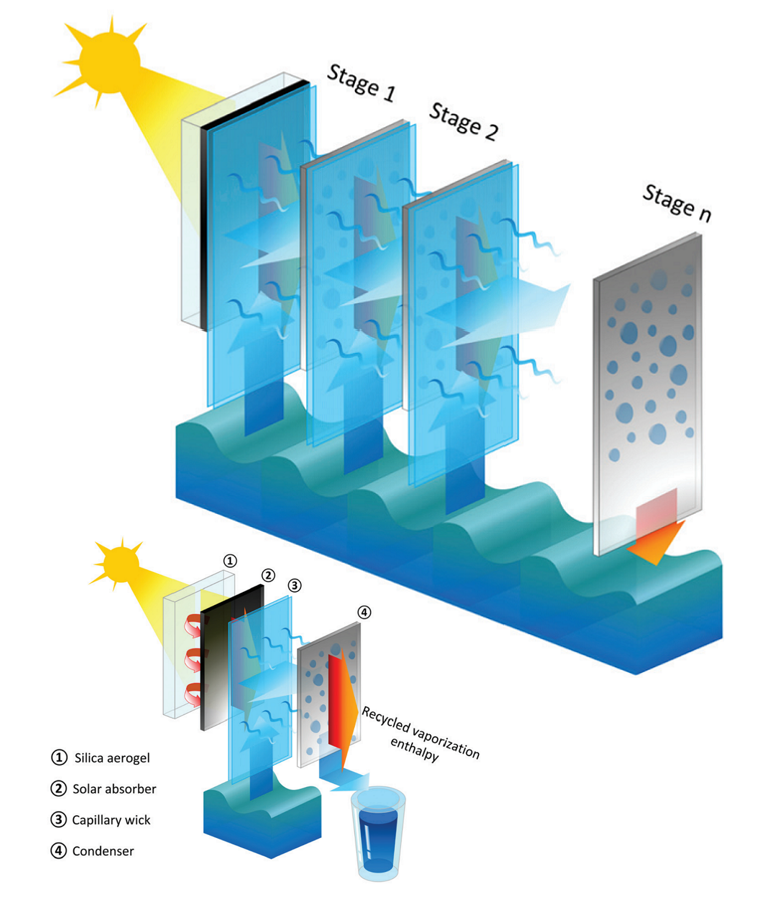Water Sustainability
Water scarcity and access to potable water are critical global challenges. Depending on the region and availability of water sources, different technologies need to be pursued to produce clean water. At the DRL, 1) We design innovative solar distillation devices with optimized heat and mass transfer to achieve a higher solar-to-vapor efficiency; 2) We use advanced materials and micro/nanostructures to improve various desalination technologies; 3) We develop atmospheric water harvesting devices that utilize adsorbent materials to capture water vapor from the air.
Water Desalination

Solar vapor evaporation
Membrane-based reverse osmosis
Capacitive deionization
Atmospheric Water Harvesting

Water harvester design
Water transport in porous media
Water Splitting

Bubble dynamics on gas evolving electrodes
Recent Progress
Dual-stage scalable water harvester

Atmospheric water harvesting (AWH) presents a source for decentralized drinking water supply, particularly where liquid water resources are scarce. In contrast to more conventional methods of AWH, using adsorbent materials can supply drinking water even when the moisture content of the air is low and can be driven by solar-thermal energy. Prior work on solar-driven AWH using adsorbents suffers from low daily water productivity and energy efficiency due to heat and mass transfer limitations and energy requirements in the adsorption and condensation processes. Here, we developed a dual-stage AWH device using commercial zeolite (AQSOA Z01) with optimized thermal and vapor transport where the two stages increase the daily water harvesting productivity and recycle the latent heat of condensation from the top stage to assist in driving desorption of the bottom stage. In outdoor experiments, we demonstrated the dual-stage concept and showed a daily water harvesting productivity of ~0.77 L/m2/day. This work highlights opportunities for higher capacity water production and opens new pathways towards scalable, lower-cost solar-thermal AWH systems.
Ultrahigh-efficiency solar desalination via multistage thermal localization

Passive vapor generation systems with interfacial solar heat localization enable high-efficiency low-cost desalination. Recent progress combining interfacial solar heating and vaporization enthalpy recycling through a capillary-fed multistage architecture, known as the thermally localized multistage solar still (TMSS), significantly improves the performance of passive solar desalination. Yet, state-of-the-art experimental demonstrations of solar-to-vapor conversion efficiency are still limited since the dominant factors and the general design principle for TMSS were not well-understood. In this work, we show optimizing the overall heat and mass transport in a multistage configuration plays a key role for further improving the performance. This understanding also increases the flexibility of material choices for the TMSS design. Using a low-cost and free-of-salt accumulation TMSS architecture, we experimentally demonstrated a record-high solar-to-vapor conversion efficiency of 385% with a production rate of 5.78 L m-2h-2 under one-sun illumination, where more than 75% of the total production was collected through condensation. This work not only significantly improves the performance of existing passive solar desalination technologies for portable and affordable drinking
Adsorption-based atmospheric water harvesting device for arid climates

Passive vapor generation systems with interfacial solar heat localization enable high-efficiency low-cost desalination. Recent progress combining interfacial solar heating and vaporization enthalpy recycling through a capillary-fed multistage architecture, known as the thermally localized multistage solar still (TMSS), significantly improves the performance of passive solar desalination. Yet, state-of-the-art experimental demonstrations of solar-to-vapor conversion efficiency are still limited since the dominant factors and the general design principle for TMSS were not well-understood. In this work, we show optimizing the overall heat and mass transport in a multistage configuration plays a key role for further improving the performance. This understanding also increases the flexibility of material choices for the TMSS design. Using a low-cost and free-of-salt accumulation TMSS architecture, we experimentally demonstrated a record-high solar-to-vapor conversion efficiency of 385% with a production rate of 5.78 L m-2h-2 under one-sun illumination, where more than 75% of the total production was collected through condensation. This work not only significantly improves the performance of existing passive solar desalination technologies for portable and affordable drinking
